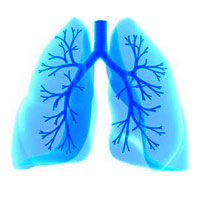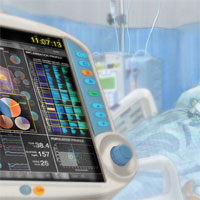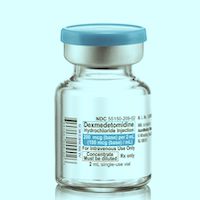
Considerations in the Diagnosis of Idiopathic Pulmonary Fibrosis
The clinical practice guideline on diagnosis of idiopathic pulmonary fibrosis (IPF) by Raghu and colleagues has been helpful in addressing the complexities of radiological and pathological features in diagnosing IPF. The... read more

ICU Admissions Raise Chronic Condition Risk
A new study of ICU patients in the Netherlands shows a heightened risk of developing new chronic conditions in patients after an intensive care stay. The research showed rising likelihood of conditions such as depression,... read more

Mythbuster: Administration of Vasopressors Through Peripheral Intravenous Access
Vasopressors are frequently used in critically ill patients with hemodynamic instability both in the emergency department (ED) as well as intensive care units (ICUs). Typically, vasopressors are given through central venous... read more

Caring for Critically Ill Patients in Humanitarian Settings
Critical care medicine is far from the first medical field to come to mind when humanitarian action is mentioned, yet both critical care and humanitarian action share a fundamental purpose to save the lives and ease the suffering... read more

Procalcitonin Reduces Antibiotic Use with No Negative Outcomes
The elderly patient presenting to the ED with nonspecific symptoms remains a diagnostic and therapeutic challenge. Often, these patients arrive with general complaints ranging from altered mental status to weakness, subjective... read more

New Guidelines for Hospital-acquired Pneumonia/Ventilator-associated Pneumonia
American and European guidelines have many areas of common agreement such as limiting antibiotic duration. Both guidelines were in favor of a close clinical assessment. Neither recommended a regular use of biomarkers but... read more

Clinics Aim to Improve Post-ICU Recovery
Ten days after arriving in the emergency department with pneumonia, 58-year-old Connie Bovier woke up in the intensive care unit (ICU). She survived acute respiratory distress syndrome (ARDS), sepsis, and a host of other... read more

Selected Imaging Controversies in ED Trauma
Traumatic injuries are amongst the most common presentations for all emergency departments (ED). In 2010, there were over 1 million patients in Canada who visited the ED for trauma, result in an cost of almost 9 billion dollars.... read more

Long-Term Mortality and Hospital Resource Use in ICU Patients With Alcohol-Related Liver Disease
ICU patients with alcohol-related liver disease have higher 5-year mortality and emergency readmission rates than ICU patients with other severe comorbidities and matched general ICU patients. These data can contribute to... read more

Sepsis Test Could Show Results In Minutes
A new rapid test for earlier diagnosis of sepsis is being developed by University of Strathclyde researchers. The device, which has been tested in a laboratory, may be capable of producing results in two-and-a-half minutes,... read more

Antibiotic Treatment of Hospital-acquired Pneumonia
Although more prospective therapy trials of Hospital-acquired Pneumonia (HAP) are needed, based on currently available data, it is possible to use an approach that provides appropriate therapy without the overuse of broad-spectrum... read more

Effect of a Resuscitation Strategy Targeting Peripheral Perfusion Status vs Serum Lactate Levels on 28-Day Mortality Among Patients With Septic Shock
Among patients with septic shock, a resuscitation strategy targeting normalization of capillary refill time, compared with a strategy targeting serum lactate levels, did not reduce all-cause 28-day mortality. Among 424 patients... read more

Effect of Intravenous Acetaminophen vs Placebo Combined With Propofol or Dexmedetomidine on Postoperative Delirium Among Older Patients Following Cardiac Surgery
Among older patients undergoing cardiac surgery, postoperative scheduled IV acetaminophen, combined with IV propofol or dexmedetomidine, reduced in-hospital delirium vs placebo. Additional research, including comparison of... read more

Bag-Mask Ventilation during Tracheal Intubation of Critically Ill Adults
Among critically ill adults undergoing tracheal intubation, patients receiving bag-mask ventilation had higher oxygen saturations and a lower incidence of severe hypoxemia than those receiving no ventilation. Among the 401... read more








